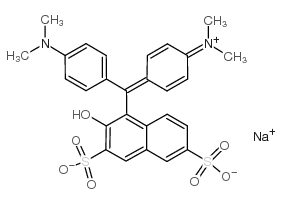PCR assessment of HSV-1 corneal infection in animals treated with rose bengal and lissamine green B.
W G Stroop, T M Chen, J Chodosh, T E Kienzle, J L Stroop, J Y Ling, D A Miles
文献索引:Invest. Ophthalmol. Vis. Sci. 41(8) , 2096-102, (2000)
全文:HTML全文
摘要
In vivo, the ophthalmic dye rose bengal displays profound antiviral effects against herpes simplex virus (HSV)-1, thus limiting its utility in diagnosis of epithelial keratitis when used before viral culture is performed. In contrast, lissamine green B does not possess significant antiviral activity in vivo. To determine whether polymerase chain reaction (PCR) could successfully detect HSV-1 DNA in ocular samples that have been exposed to ophthalmic dyes, animal models were used to observe the presence of infectious HSV-1 and viral DNA in eyes treated with rose bengal or lissamine green B.Animals were bilaterally infected with HSV-1 strain H129, and at daily intervals up to 16 days post infection (dpi) rose bengal or lissamine green B was instilled in the left eyes. The right eyes were not treated with dyes. Swabs of the dye-treated and untreated eyes were assayed by PCR for viral infectivity by culture and the presence of DNA specific for a fragment of the HSV-1 DNA polymerase gene.A statistically equivalent number of samples from lissamine green B-treated and untreated eyes were positive by both viral culture and PCR. In contrast, rose bengal significantly decreased the infectious virus present in ocular secretions. A total of 44% and 78% of the rose bengal-treated and untreated eye samples, respectively, were positive by culture from 1 through 16 dpi. PCR was more sensitive than culture for detection of HSV-1 in rose bengal-treated eyes, in that 74% of rose bengal-treated samples were positive by PCR compared with 44% that were positive by culture during the 16-day period studied. It was also noted that both rose bengal and lissamine green B treatments slightly prolonged the period during which viral DNA was detectable in ocular secretions by PCR, possibly because the singlet oxygen produced by these photoreactive dyes compromised ocular cellular, humoral, and nonspecific immune factors allowing viral DNA to persist for slightly longer periods.PCR can successfully detect HSV-1 DNA in ocular samples that are culture negative and contain rose bengal or lissamine green B. Visualization of ocular epithelial defects with lissamine green B does not interfere with detection of infectious virus or HSV-1 DNA.
相关化合物
| 结构式 | 名称/CAS号 | 分子式 | 全部文献 |
|---|---|---|---|
 |
酸性绿50
CAS:3087-16-9 |
C27H25N2NaO7S2 |
|
Comparative Genomics of Listeria Sensu Lato: Genus-Wide Diff...
2015-08-01 [Genome Biol. Evol. 7 , 2154-72, (2015)] |
|
Electro-Fenton decolourisation of dyes in an airlift continu...
2013-04-01 [Environ. Sci. Pollut. Res. Int. 20(4) , 2252-61, (2013)] |
|
Decolourisation of dyes under electro-Fenton process using F...
2012-04-30 [J. Hazard. Mater. 213-214 , 369-77, (2012)] |
|
[Substances for staining biological tissues: use of dyes in ...
2005-04-01 [Klin. Monbl. Augenheilkd. 222(4) , 309-11, (2005)] |
|
A modified Schirmer test in dry eye and normal subjects: ope...
2010-04-01 [Cornea 29(4) , 384-7, (2010)] |